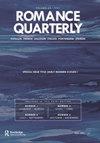Mario Verdaguer作为《战地:一个名字从公众出现到被纪念的挣扎
IF 0.2
3区 文学
0 LITERATURE, ROMANCE
引用次数: 0
摘要
点击放大图片点击缩小图片注释1 雅辛特-韦尔达盖尔是马里扬-多维奇(Marijan Dović)和约恩-卡尔-赫尔加松(Jón Karl Helgason)所说的民族诗人和文化圣人。巴塞罗那市政厅将他封为 "加泰罗尼亚圣人"(català il-lustre),并为他建造了街道、纪念碑、雕塑,甚至一颗小行星。Mercè Rodoreda 回忆说,她的祖父 "在 Mossèn Cinto 逝世后,会把 Mossèn Cinto 的照片放大,稍后会把 Sant Jacint Verdaguer 的照片贴在墙上,然后会把黑白照片贴在墙上"(157)2 :2 Verdaguer 在回忆这段往事时还不忘自嘲:"el grupo se sintió desalentado y más llorón que nunca al ver la incomprensión y el materialismo que le rodeaban"(La ciudad 164)。尽管如此,浪漫主义/现代主义认为专业作家(和评论家)受到物质主义的玷污,而物质主义反过来又与文学的真实性背道而驰,这对维达盖尔来说至关重要,我将在下文中进一步论述3。其中一个例子是理发师兼艺术家安东尼-盖拉伯特(Antoni Gelabert),他是一位才华横溢的画家--何塞-卡洛斯-略普(José Carlos Llop)认为他是 "马略卡岛上最伟大的画家"(《La ciutat》)--但他无法创作出太多作品,也从未获得过应有的尊重,因为他拒绝为了谋生而出售自己的画作,并辞去了理发师的工作:"你认为绘画是一种商业行为吗?(Verdaguer, La ciudad 134)。Verdaguer 对 Gelabert 的评论可以作为对《Une intelectual y su carcoma》主人公的双重描述:他说:"这两个庸俗而猥琐的人之间的争斗非常激烈;因为他们之间的关系是不可调和的、敌对的,他们之间无法建立任何协议"(《城市》第 132 页)。4 这个人物与 Verdaguer 在现实生活中遇到的一个人也有相似之处:"El poeta García Rover, que trabajaba como tipógrafo en la imprenta de 'La Almudaina'" (La ciudad 138)。5 Verdaguer 的作品虽然不以政治为重点,但也包含一些对马克思主义(El marido 57)、普里莫-德里维拉独裁统治和天主教学者(Un intelectual 63-64)的批判。他对拉斐尔-坎帕兰斯(Rafael Campalans)的《Hacia la España de todos》(1932 年)的评论表明,他对伊比利亚主义持有好感(《Hacia la España de todos》1)--这些观点超越了严格的文化领域,他曾以《伊比利亚世界》(Mundo ibérico,1927 年)杂志主编的身份为该杂志做出贡献。7 艾娜和尼娜-莫尔的父亲弗朗切斯克-德-博尔哈-莫尔在内战后通过努力完成《加泰罗尼亚语-瓦伦西亚语-巴利阿里语词典》和 1962 年成立巴利阿里文化组织,为巴利阿里群岛保持加泰罗尼亚语和文化的活力发挥了至关重要的作用。此外,他还成功地鼓励 Llorenç Villalonga 等曾经是法郎派的马洛卡人重新使用加泰罗尼亚语,艾纳-莫尔在民主时代继续着这一文化领导使命。艾娜-莫尔在她的传记著作《弗朗切斯科-德-博尔哈-莫尔》中全面介绍了她父亲对加泰罗尼亚语的承诺。8 加泰罗尼亚议会批准的文件对《巴利阿里群岛语言正常化法案》(1986 年)的影响怎么强调都不过分。Ajuntament de Maó在其 "杰出未成年人画廊 "中对 Verdaguer 的介绍最能体现对民事登记的反驳,该画廊在脚注中提到了作者的出生登记--他在登记中的名字是 "马里奥"--并确认 "他登记的名字是 Màrius、Segismundo、Cayetano、Luis 和 Antonio"("Màrius Verdaguer Travesí")。10 关于佛朗哥主义时期和后佛朗哥主义时期的研究,见 Crameri (Language)。11 与《中世纪》相比,《消失的城市》中包含了一些口头加泰罗尼亚语的样本,但这并不等同于证实不表述的一般规则的例外。本文章由计算机程序翻译,如有差异,请以英文原文为准。
Mario Verdaguer as Battlefield: The Struggles of a Name from Public Emergence to Memorialization
Click to increase image sizeClick to decrease image size Notes1 Jacint Verdaguer is what Marijan Dović and Jón Karl Helgason call a national poet and cultural saint. His canonization entailed his induction as a “català il·lustre” by Barcelona City Hall and the dedication of streets, monuments, sculptures, and even an asteroid. Mercè Rodoreda recounted that her grandfather, “quan mossèn Cinto va morir, va fer ampliar una fotografia de mossèn Cinto, al peu hi va fer posar unes lletres amb caràcters gòtics que deien Sant Jacint Verdaguer i la va fer emmarcar de negre i or” (157).2 Verdaguer engages in self-mockery when remembering this episode: “el grupo se sintió desalentado y más llorón que nunca al ver la incomprensión y el materialismo que le rodeaban” (La ciudad 164). Sarcasm notwithstanding, the romantic/modernista vision of professional writers (and critics) as tainted by materialism, which is in turn antithetical to literary authenticity, is central to Verdaguer, as I discuss further on.3 Verdaguer encountered several people who embodied a similar internal struggle. One example is the barber and artist Antoni Gelabert, a greatly talented painter—José Carlos Llop considers him “el millor pintor que ha donat Mallorca” (La ciutat)—who was unable to produce much work and never received the esteem he deserved because he refused to sell his paintings in order to make a living and quit his job as a barber: “¿Es que te figuras que la pintura es una mercancía?” (Verdaguer, La ciudad 134). Verdaguer’s remarks about Gelabert could double as description of the protagonist of Un intelectual y su carcoma: “La lucha entre los dos elementos que habitaban dentro de aquel cuerpo feo y vulgar era verdaderamente trágica; pues se trataba de dos fuerzas antagónicas e irreconciliables, entre las cuales no podría establecerse jamás pacto alguno” (La ciudad 132).4 The character also bears resemblance with someone Verdaguer encountered in real life: “El poeta García Rover, que trabajaba como tipógrafo en la imprenta de ‘La Almudaina’” (La ciudad 138).5 While not politically focused, Verdaguer’s works do contain some critiques to Marxism (El marido 57), the Dictatorship of Primo de Rivera, and Catholic pundits (Un intelectual 63–64). His review of Rafael Campalans’s Hacia la España de todos (1932) suggests that he harbored favorable views toward Iberianism (“Hacia la España de todos” 1)—views that transcended the strictly cultural realm, which he contributed to in the capacity of editor-in-chief of the journal Mundo ibérico (1927).6 For a comprehensive account of the events, see the Crònica del Centenari de Màrius Verdaguer available at the Bilbioteca de Catalunya (F 08–Fol 10).7 Aina and Nina Moll’s father, Francesc de Borja Moll, had played a crucial role in maintaining the flame of Catalan language and culture alive in the Balearic Islands after the Civil War through his work to complete the Diccionari català-valencià-balear and the founding of Obra Cultural Balear in 1962. In addition, he successfully encouraged formerly Falangist Mallorcans such as Llorenç Villalonga to re-enter the Catalan-language fold, a cultural leadership mission that Aina Moll continued in democratic times. Aina Moll provided a comprehensive account of her father’s commitment to Catalan in her biographic book Francesc de Borja Moll. La fidelitat tossuda (2003).8 The influence of the document approved by the Parliament of Catalonia on the Llei de Normalització Lingüística de les Illes Balears (1986) can hardly be overstated.9 The countering of the civil registry is exemplified best by the Ajuntament de Maó’s profile of Verdaguer in its “Gallery of Distinguished Minorcans,” which provides a footnote reference to the author’s birth registry—where he figures as “Mario”—only to affirm that “[h]e was registered with the names of Màrius, Segismundo, Cayetano, Luis, and Antonio” (“Màrius Verdaguer Travesí”). Despite the historical accuracy effected by way of reference to the civil registry, the fact that the name “Màrius” is the only one spelled in Catalan reveals its normative amendment.10 For a study of the Francoist and post-Francoist periods, see Crameri (Language).11 In contrast with Medio siglo, La ciudad desvanecida includes a few samples of oral Catalan, but these do not amount to more than an exception confirming the general rule of non-representation.
求助全文
通过发布文献求助,成功后即可免费获取论文全文。
去求助
来源期刊

ROMANCE QUARTERLY
LITERATURE, ROMANCE-
CiteScore
0.30
自引率
50.00%
发文量
18
期刊介绍:
Lorca and Baudelaire, Chrétien de Troyes and Borges. The articles in Romance Quarterly provide insight into classic and contemporary works of literature originating in the Romance languages. The journal publishes historical and interpretative articles primarily on French and Spanish literature but also on Catalan, Italian, Portuguese, and Brazilian literature. RQ contains critical essays and book reviews, mostly in English but also in Romance languages, by scholars from universities all over the world. Romance Quarterly belongs in every department and library of Romance languages.
 求助内容:
求助内容: 应助结果提醒方式:
应助结果提醒方式:


